In pictures: Celebrations across India as devotees mark Dussehra festival
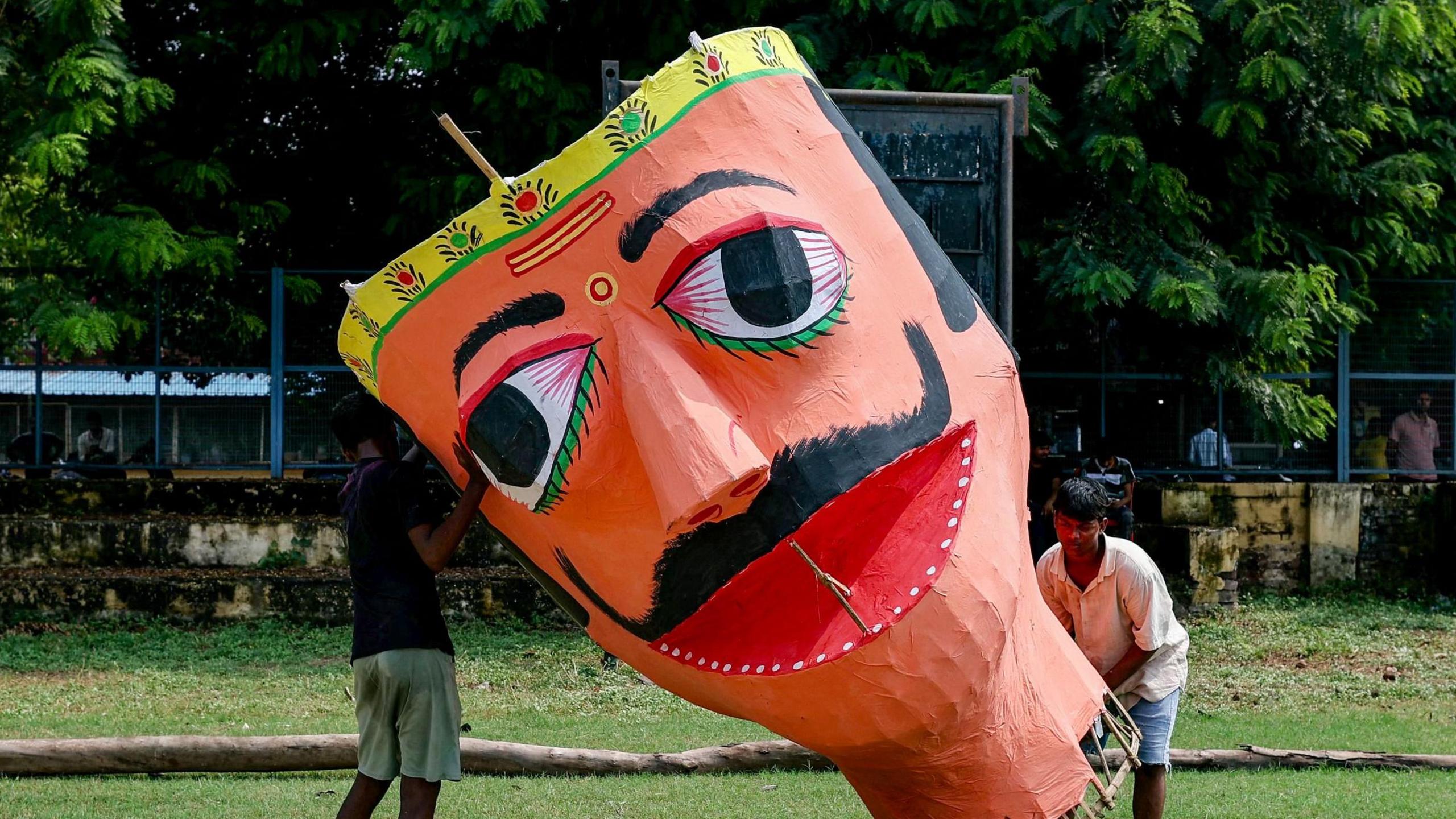
Dussehra marks the victory of good over evil
- Published
Millions of Indians are celebrating Dussehra - one of Hinduism's most important festivals - that symbolises the triumph of good over evil.
Dussehra commemorates the deity Lord Ram's victory over the ten-headed demon king Ravan.
Across the country, Dussehra is marked with different rituals and traditions, but a common celebratory grandeur.
Dussehra falls on the tenth day of the seventh month of the lunar calendar and is preceded by the festival of Navratri (the nine nights leading up to Dussehra), when people worship different forms of the Hindu goddess Durga.
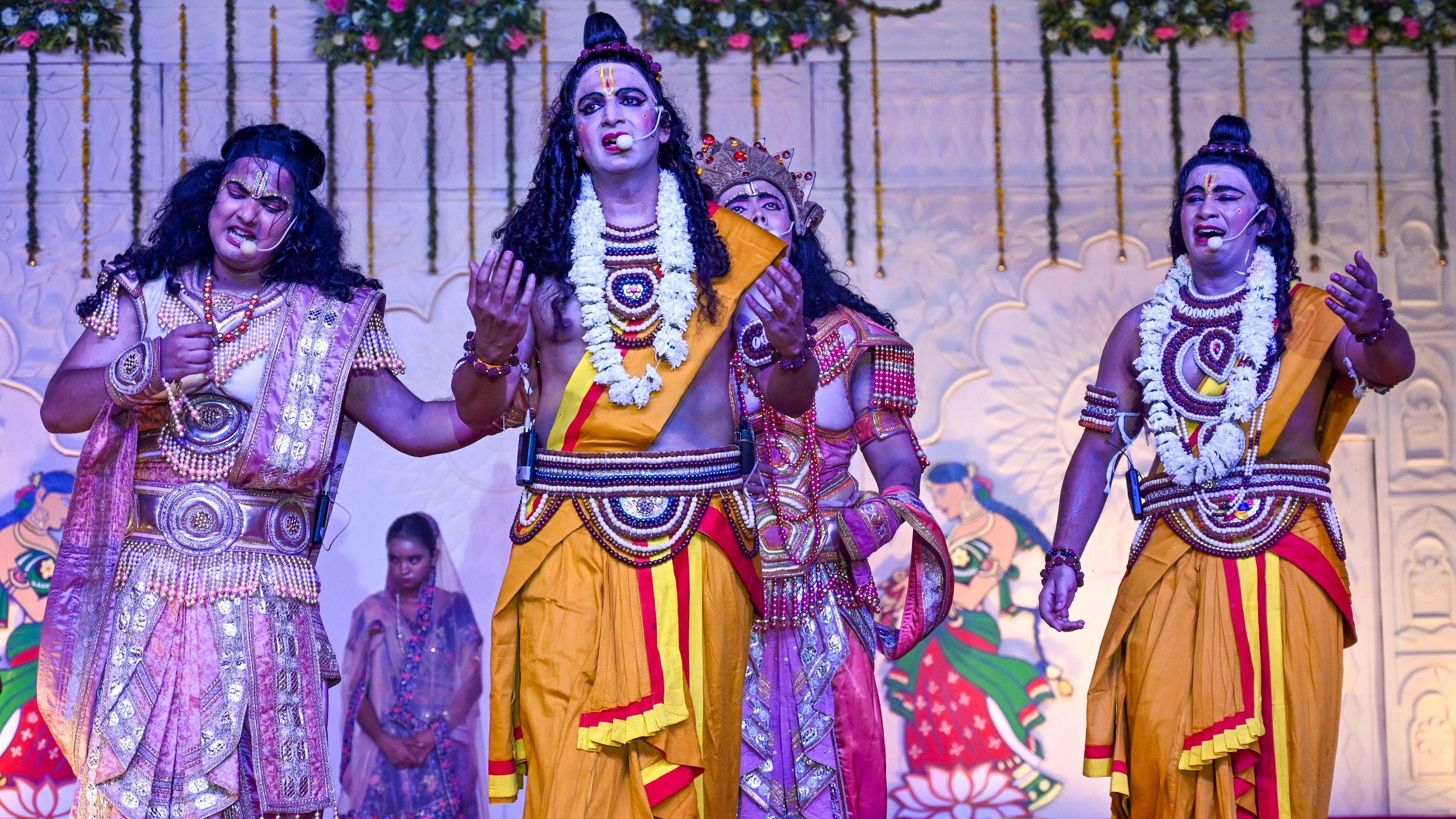
Ramlila - a theatrical performance based on the Hindu epic Ramayan - is performed during Dussehra
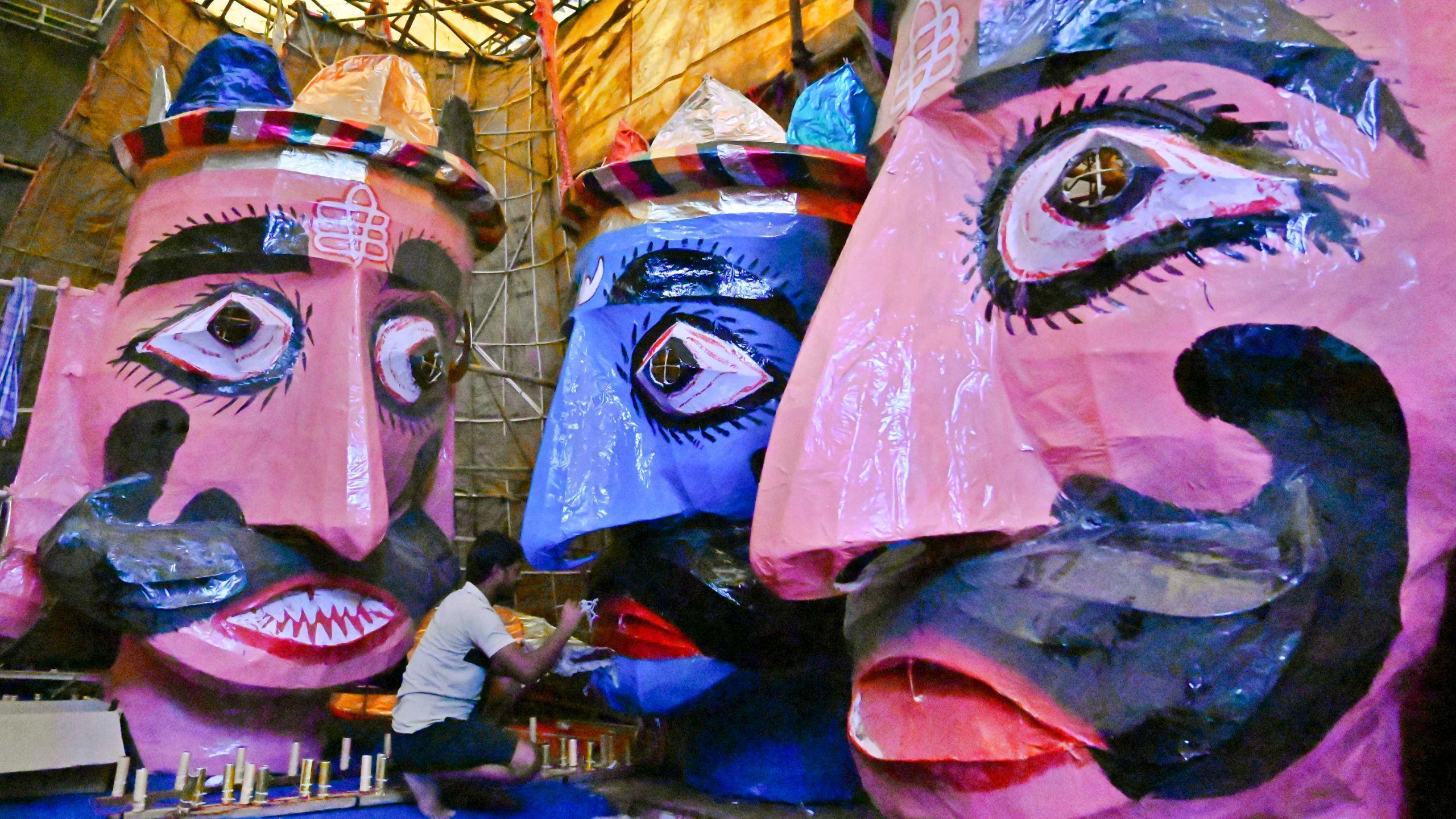
Artists prepare massive effigies of the demon king Ravana, which are burnt on Dussehra
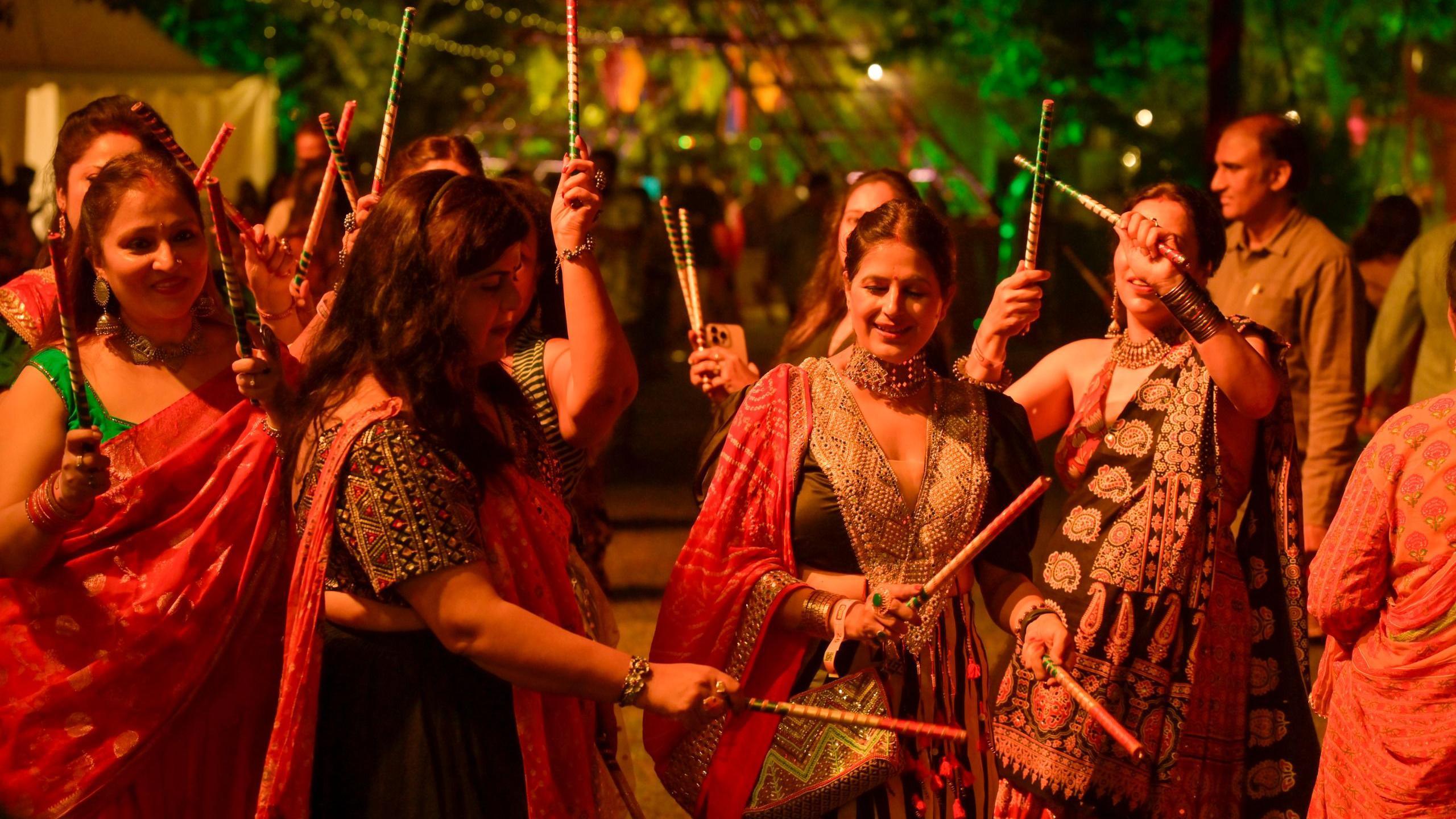
Women in finery celebrating Navratri, with nights of dancing called Garba
During Dussehra, grand performances including vibrant music and dance nights are typically held in open-air grounds in towns and villages across India.
People visit their friends and family, exchange sweets and gifts and spend evenings at pop-up carnivals with ferris wheels and swings.
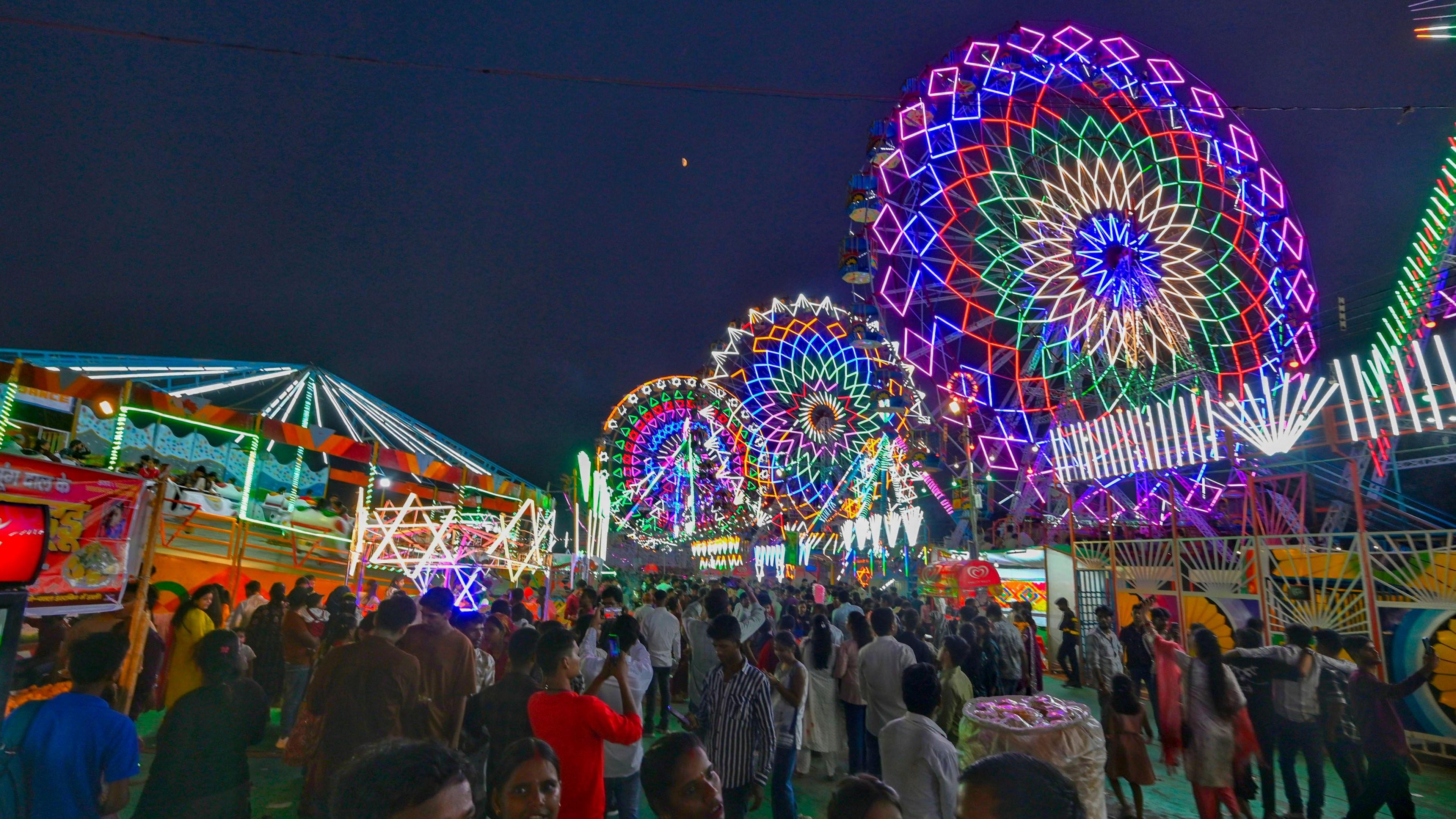
Dussehra nights are marked by illuminated carnivals, where people enjoy food and games
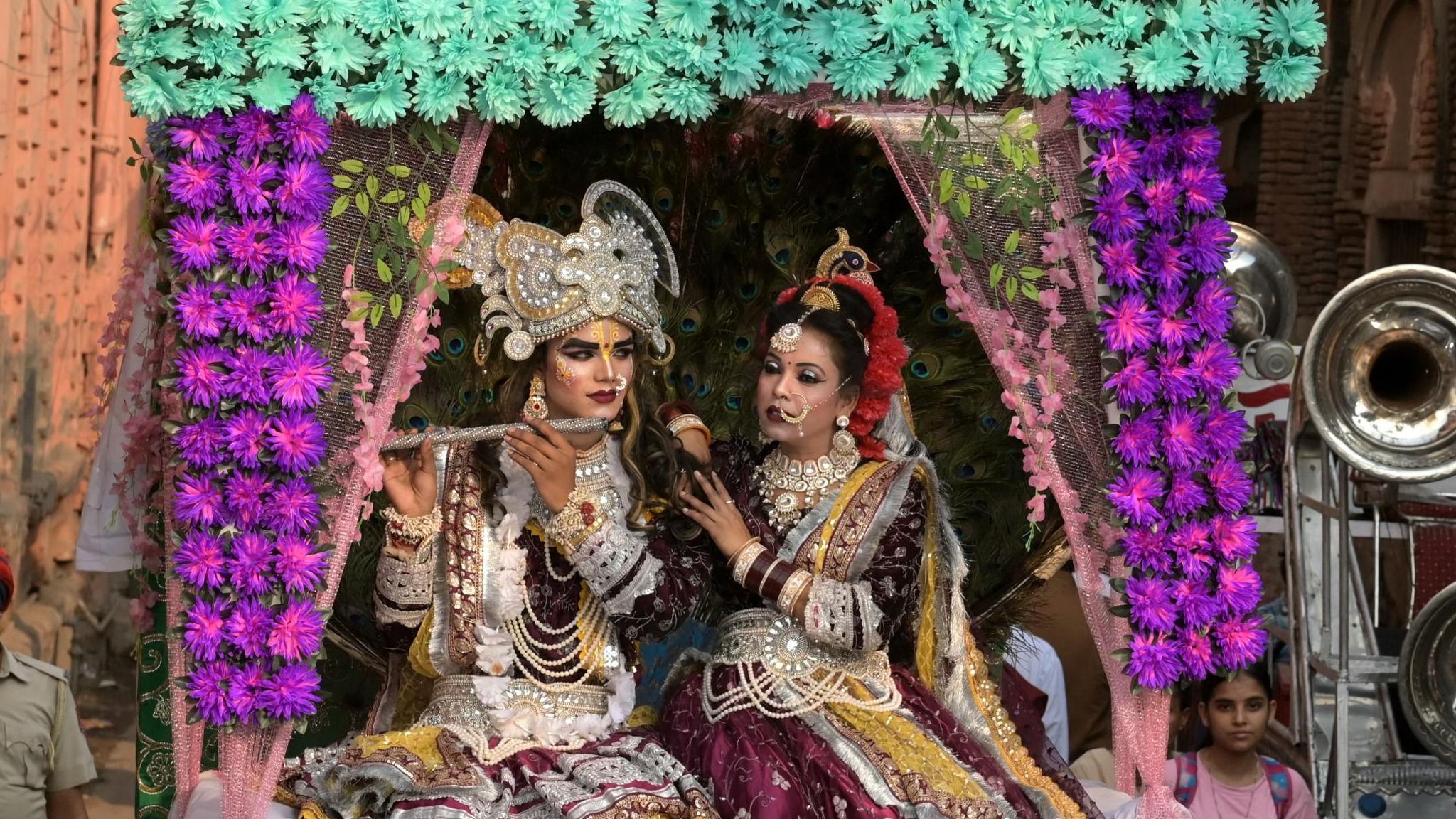
Colourful processions and theatrical performances take place across towns and villages to mark the festival
During the festival, people wearing elaborate costumes typically enact the Ramlila - a theatrical rendition of the two millennia-old epic Ramayana.
These performances take place on brightly lit stages, where artists dressed in vibrant costumes and makeup, play characters from the epic.
They narrate stories of Lord Ram's exile from his wife Sita and brother Lakshman, Sita's abduction by the demon-king Ravan and the ultimate battle that leads to her rescue.
The final act of the Ramlila is enacted on Dussehra day, when Ravan is killed by Ram, symbolising the triumph of good over evil.
This is marked by burning colourful effigies of Ravan, his brother Kumbhkaran and son Meghnath.
Large crowds gather to witness the spectacle and watch the figures go up in flames.
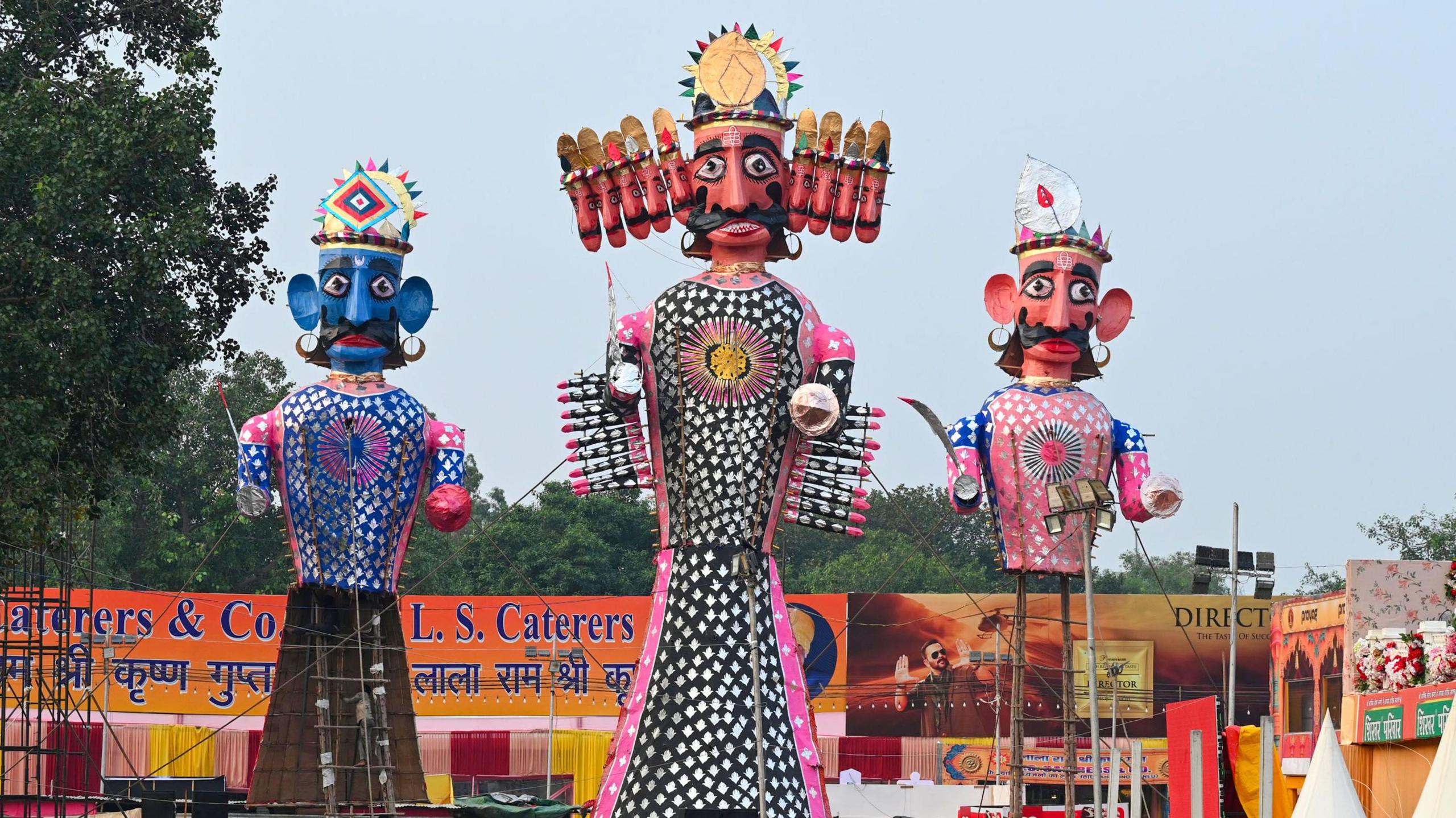
The effigies are burnt after the final dramatised battle between Ram and Ravan
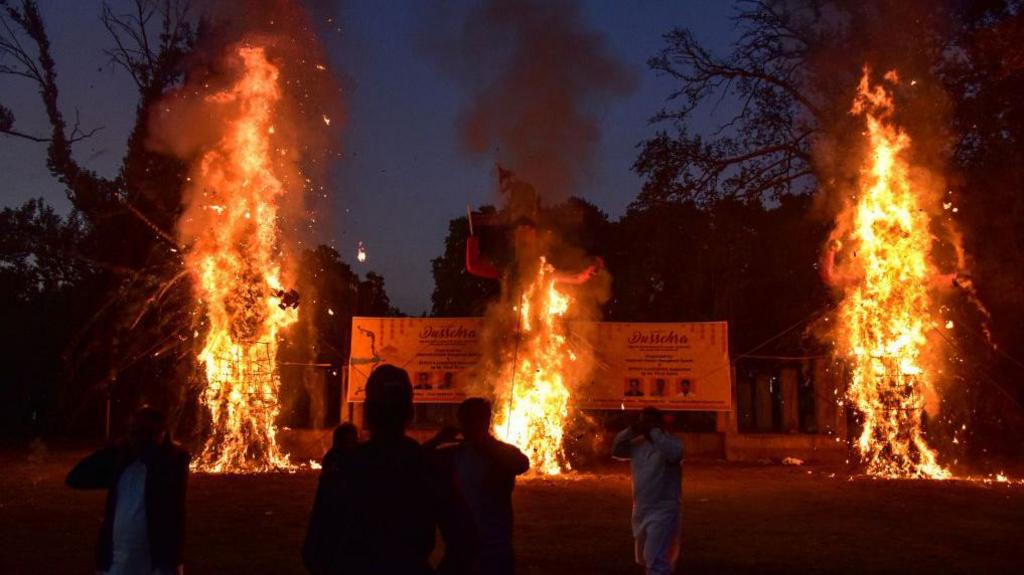
Effigies of the demon-king Ravan, his brother Kumbhkaran and son Meghnath burn, marking the triumph of good over evil
Dussehra also marks the beginning of preparations for Diwali - the festival of lights - which is held 20 days later.
Follow BBC News India on Instagram, external, YouTube,, external X, external and Facebook, external.